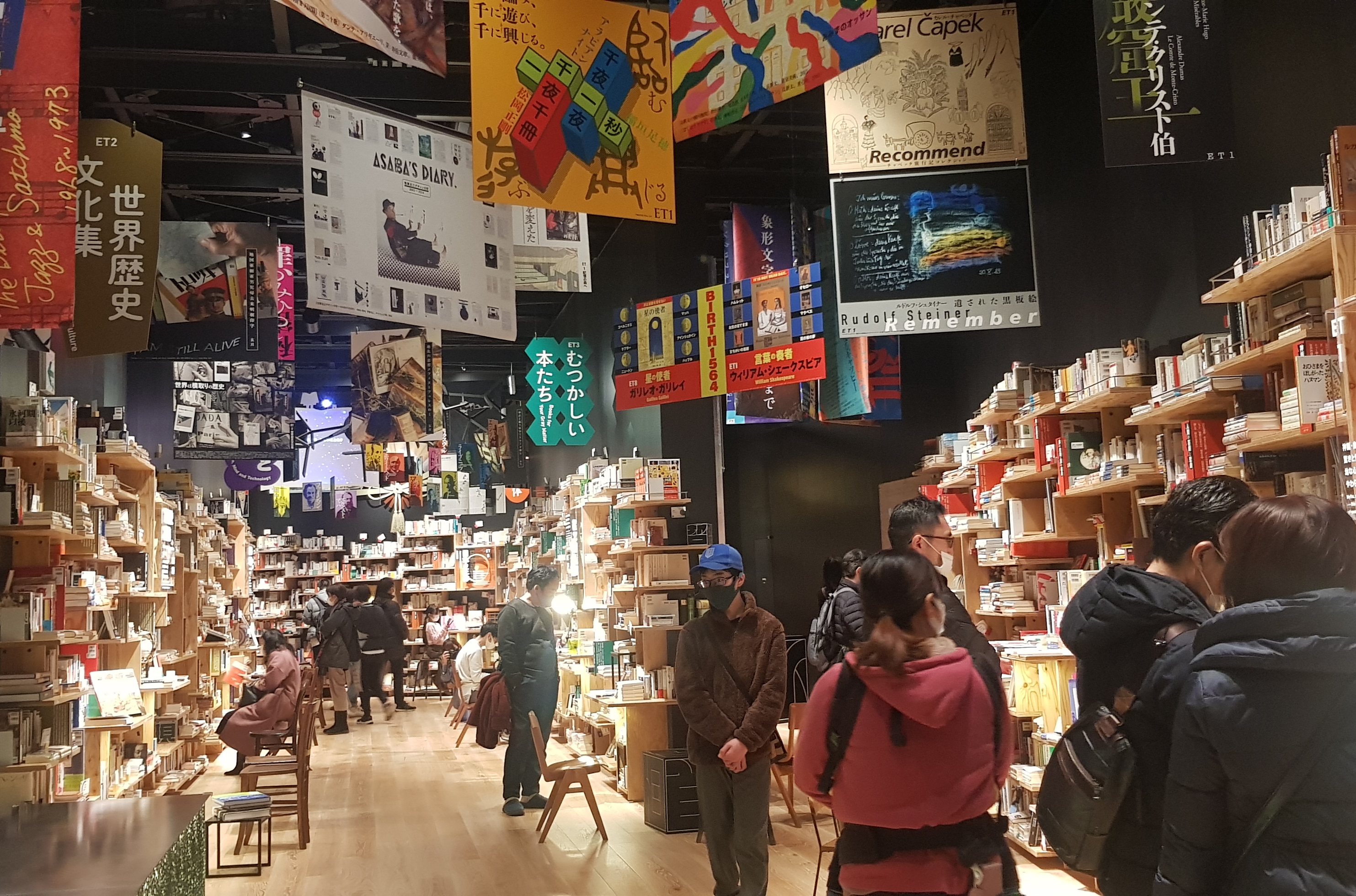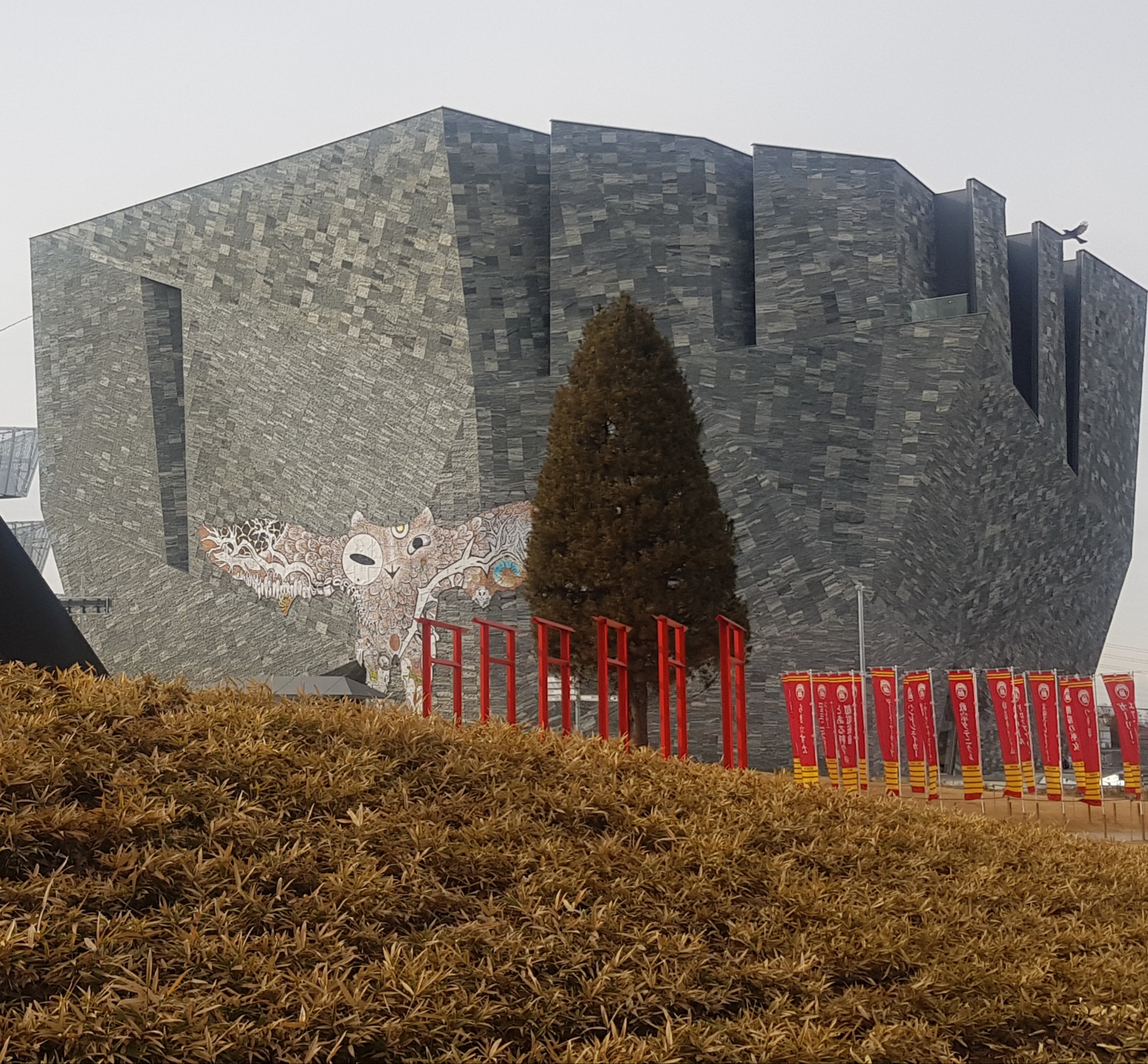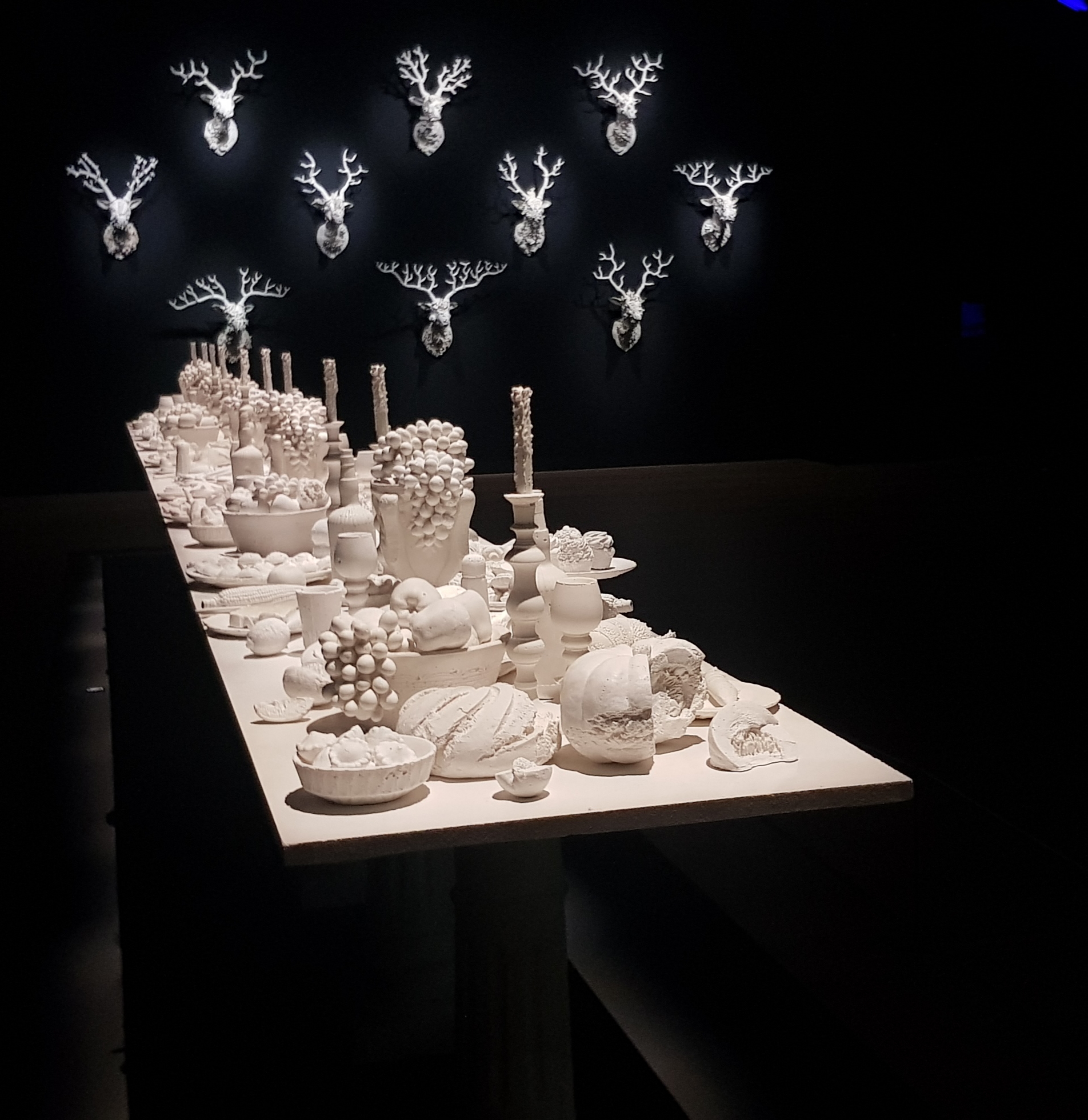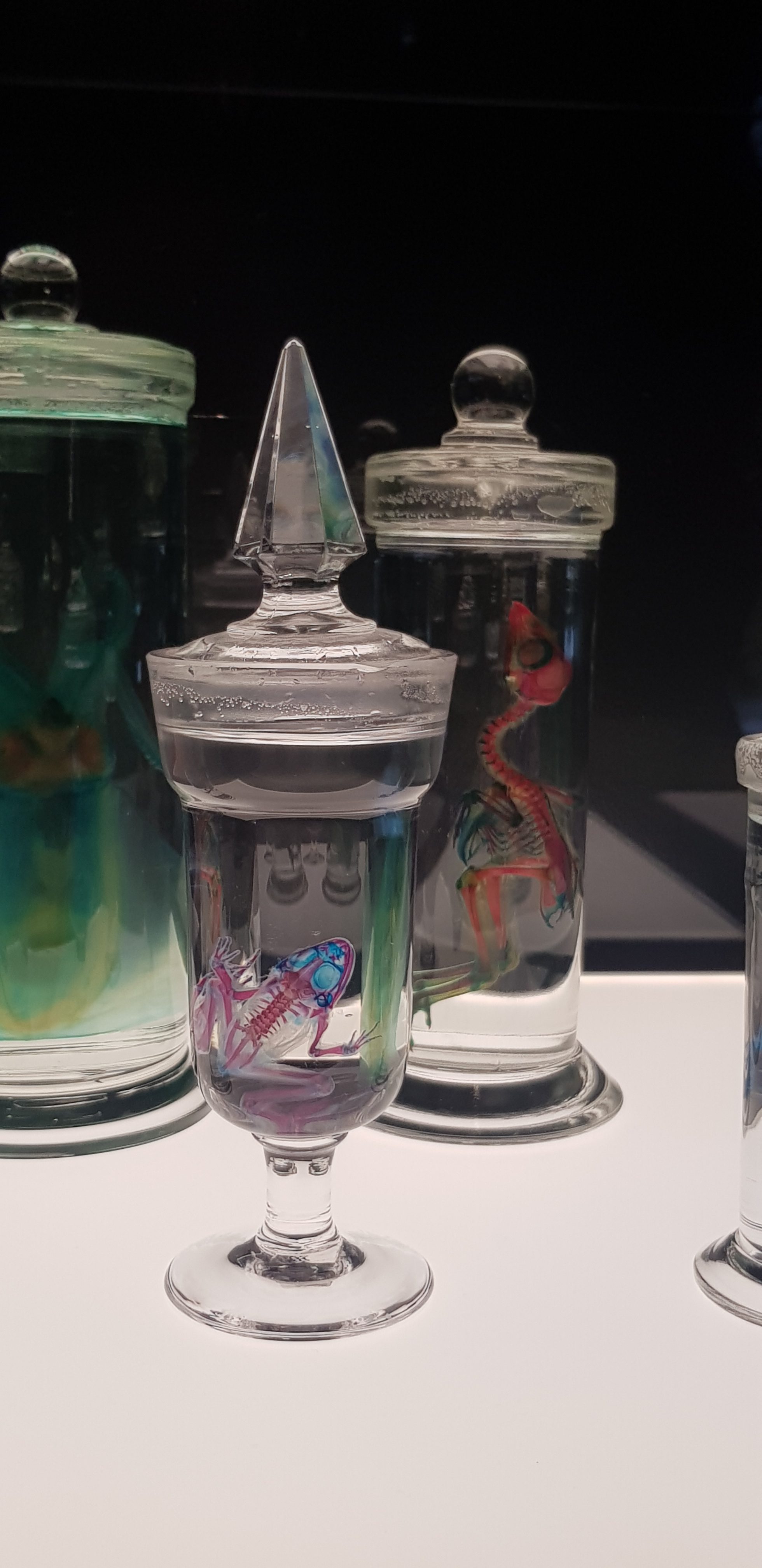This article originally featured in the February 2021 issue of Connect.
Jessica Craven (Saitama)
One of Japan’s largest publishing companies, Kadokawa Corporation, opened the Kadokawa Culture Museum in Tokorozawa, Saitama in August of last year. The word “museum” hardly describes it because it’s actually a fusion of a library, art gallery, and cultural museum. In addition to the reflection of Japanese pop culture that it houses, the museum makes quite a powerful artistic statement that dares to get a lot more political than other museums are willing to risk.
Even before entering the museum, the view of its exterior struck me with a sense of cultural disorientation. There is actually a shrine in front of the museum building that was designed alongside it. The red torii gates cut across your view of the very modern and distinctive geometrically-shaped museum building as you approach it from the bottom of a small hill. If you follow the torii with your eye, you end up gazing upon a small shrine covered in ema, the small wooden plaques you often see at temples or shrines with wishes written on them. These ema are all decorated with anime characters. I have seen ema decorated with anime characters before, but the totality of this scene made me wonder, “Am I in a traditional place or a contemporary one? Is this place religious, irreverent, or a paradox of both?” I suppose, for me, that is one of my main questions about Japan as a wholeーthis is simply something that is difficult for me to wrap my head around.
After reading museum director Seigow Matsuoka’s message, I suppose that is one of the questions he is also exploring. Part of his message reads, “Out of (humans’) imaginatinative minds sprang constellations, deities, Buddhist statues, and other minds created stories about monsters, Little Red Riding Hood, Kaguyahime (the Moon Princess), Superman, and Astro Boy” (1). In the entirety of his message, he seems to disregard neither religion nor pop culture but holds them to the same level of reverence as things that arise out of one of the core humanistic features: the imagination.
The museum opened in the midst of the coronavirus pandemic (with social distancing measures enforced), and director Matsuoka comments on this directly in his statement:
Although the world and Japan today are struggling with the effects of a permeating, invisible power, we are all trying to fight back and establish a new outlook on the future of humanity. Challenges are arising daily from a complex environment and networks, resulting in the mutation of genes and viruses. However, civilization and cultures have a history of turning invisible power into visible forms. For both local residents and global citizens, Kadokawa Culture Museum . . . shall devote itself to turning the invisible into the visible to the best of its ability.
A large print in the entry lobby by Makoto Aida, called “Picture of Amabie: Pandemic Evacuation,” makes it clear that this museum will not shy away from the topic that is heavy on everyone’s minds. At first look, the print appears to be merely an illustration of a fantastical character, but the text in the upper right-hand corner references epidemics. In his statement, the artist reflects on the fact that epidemics have always been a threat to humans throughout history and notes that artists Egon Schiele and Gustave Klimt were killed by the Spanish flu 100 years ago.
In response to the current crisis, the artist has created a story of hope and given it tangible shape. He writes that Amabie, a creature of historical Japanese folklore, is summoned by people’s anxiety during this time and thus appears in the picture. Although Amabie doesn’t promise to do anything to better the people’s situation in the traditional folklore, his appearance gives everyone hope. The artist’s message seems to be that although we don’t know what will happen next or what exactly will save us, there is always a reason to hope that things will get better somehow.
With this work of art already shaping my thoughts, I then headed to the “Editown” library on the fourth floor. The books are organized into mostly unconventional categories that are in a way more pragmatic for creative purposes. Categories such as “Forest of Memory,” “Japanese Identity,” “Between Man and Woman,” and “A Whole Lotta Images,” spark a sense of curiosity and wonder that is innate to humanity. The description under the “Japanese Identity” category sheds just a little light on the paradox that Japan can seem to be. It reads: “Among gods and Buddha, the secrets Japan holds dear never stay the same. From ancient jade stones, to security policy, from poetry to Pokemon.”
I once heard Japan be described as a country that is so visually stimulating that it’s shocking. The Kadokawa Culture Museum is the epitome of this. Books, posters, artwork, scientific specimens, and cultural artifacts are arranged in such a way that it exudes the disorganized energy of a creative mind. It reminded me of the animated home of Belle’s inventor father (from Beauty and the Beast) . . . or what I would imagine polymath Leonardo da Vinci’s personal library would be like if he had access to this much information in his time.
One of the most striking pieces hanging from the ceiling of the library were these two shirts that were sculpted out of pictures from world news. The most instantly recognizable images were of a medic who is heavily masked and of a headshot of Donald Trump. The image seemed to beg the statement: as viruses and autocrats threaten our society, the creativity of humans will endure to create a new situation.
The library bleeds into the “Edit + Art” Gallery. Unlike the jargon on many museum and gallery walls, the introduction to the exhibition is short and to the point: “Welcome to Ken + Julia Yontani: That is why I want to be saved. Our health, the economy, climate change, environmental destruction, pandemic . . . it can be said that we live with constant cause for anxiety. We are forever faced with the question of how to live with these fears. Artist duo Ken + Julia have dealt with these fears through the creation of artworks. Using their own anxieties as motivation, they seek the essence of these fears and in turn sublimated them through research, consideration, and artistic expression. We are pleased to have the opportunity of presenting you with their works, which are imbued with beauty, humor, and a sense of irony. We hope they present an occasion for all of us to face our own fears.”
One of the several large installations in the room is a long solid-white table made out of porcelain clay. The table is absolutely covered with sculpted fruits, breads, corn, and bottles of wine made out of the same material. The installation is aptly named “The Last Supper,” in clear reference to the famous tempera painting of a Christian scene by Leonardo da Vinci. However, when you consider the stone-like material that’s almost reminiscent of fossil or bone, and the anxiety related to environmental destruction that is central to their work, you can’t help but think that they tongue-in-cheek intended for this to mean the “last supper” for all of humanity. Perhaps this is an imaginary artifact from a dystopian future where humanity has gone extinct and these fossilized remains of our societal over-consumption are our only legacy. It’s a sad thought. It’s an ironic thought. We don’t want it to be the case. It seems absolutely ridiculous . . .
and that’s what arouses our collective hope to change the world that we live in.
Behind “The Last Supper” are taxidermied deer heads made out of the same white porcelain-clay material called “Disbiotica Deer.” The heads are clearly disfigured and covered in this coral-like material that reminds you of a virus or some other threatening biological growth. Although the environment is certainly under threat, it is nearly impossible to imagine a scenario in which deer could be so drastically disfigured by other life-forms. It’s like something out of a bad sci-fi horror movie, which makes it all seem ridiculous and comical. Once we laugh the anxiety away, we can clear our heads to do something about the actual environmental problems we are facing.
So which does Japan reverse more: tradition, religion or fantasy and pop-culture? After a visit to the Kadokawa Culture Museum, I’ve come to view Japan as more like a microcosm of human society as a whole: we’re a bit of a paradox, but our imagination allows us to fit things together that don’t appear harmonized at first glance. Hopefully this trait will allow us to continue to solve our pro-blems and be our salvation as a species, as it always appears to have done for humankind. The exhibitions currently on display in the Kadokawa Culture Museum reflect directly on the coronavirus pandemic and how the power of knowledge, science, and creativity can help us move past it.
Jessica is a fourth-year American JET from Arkansas state now living in Saitama. She is the art section editor for CONNECT. On weekends, she enjoys hiking in remote areas of Saitama or taking day-trips to Tokyo. When not adventuring, she can be found reading or creating her own artwork, which can be seen on her Instagram @jessica_craven_art.
Sources:
{1} https://bit.ly/2LIboCa









